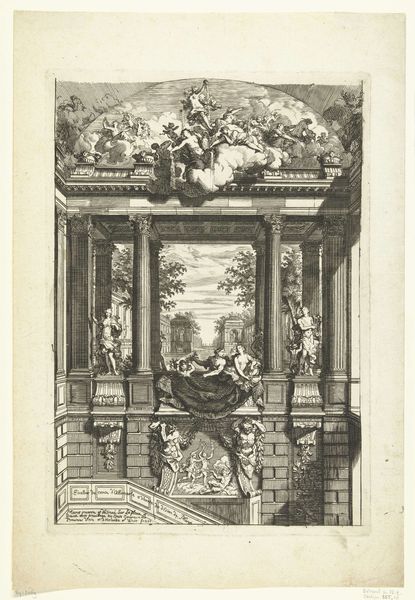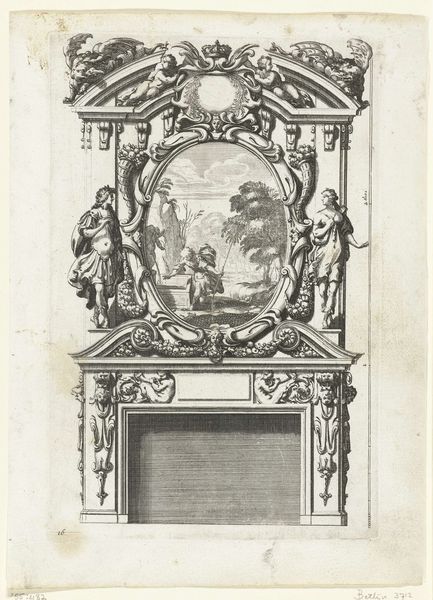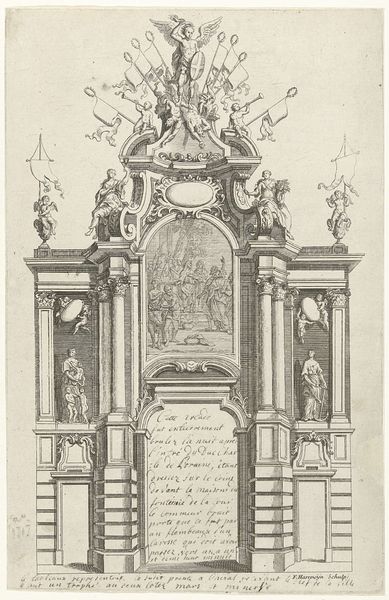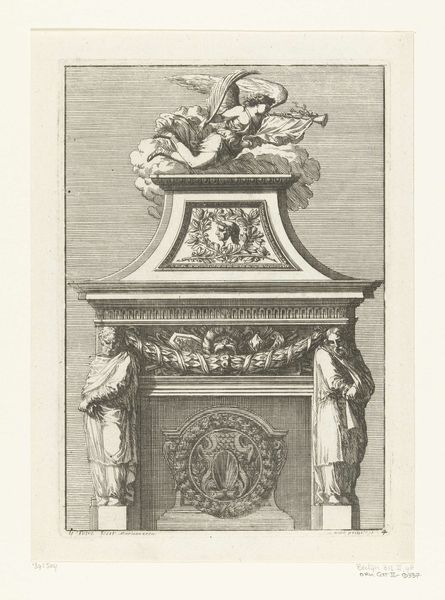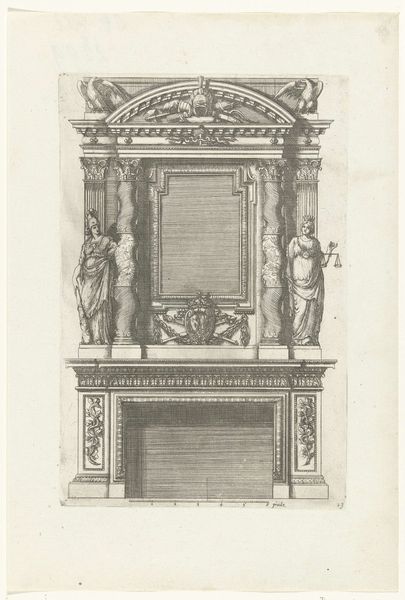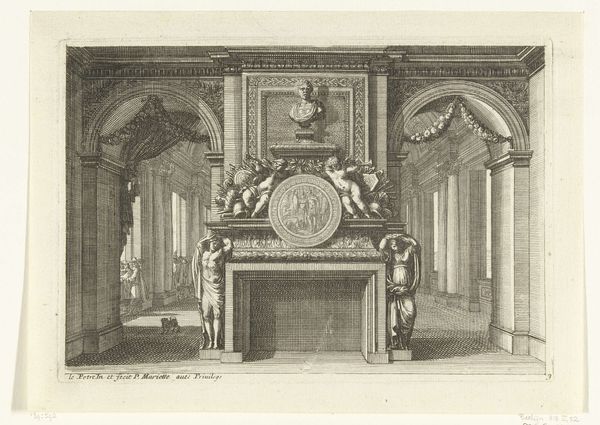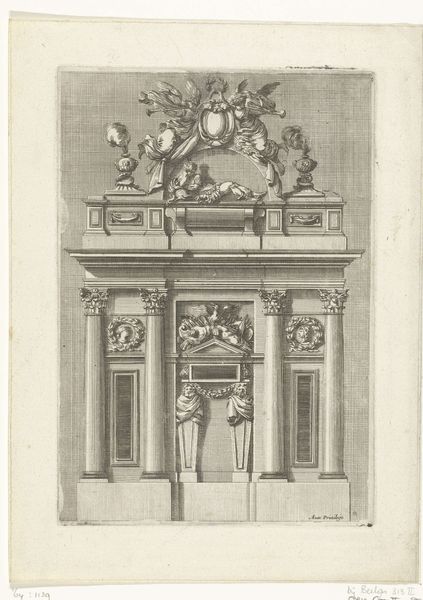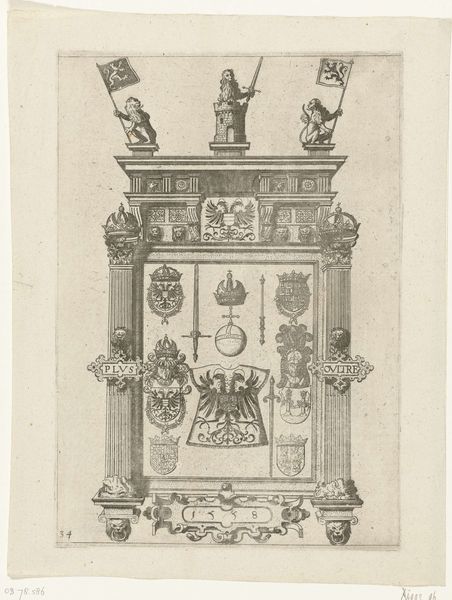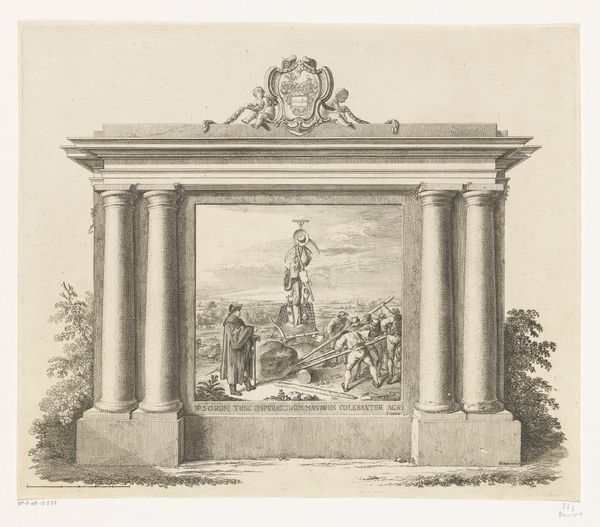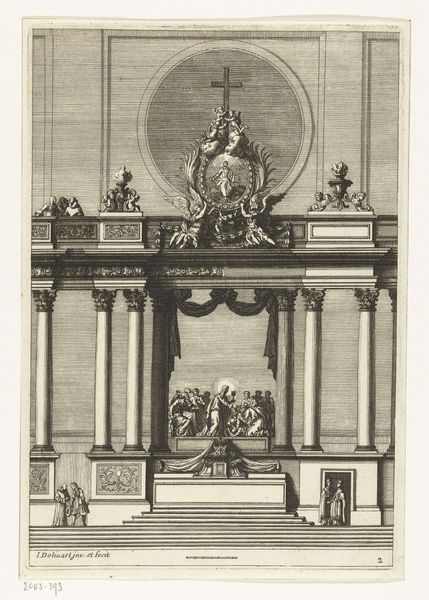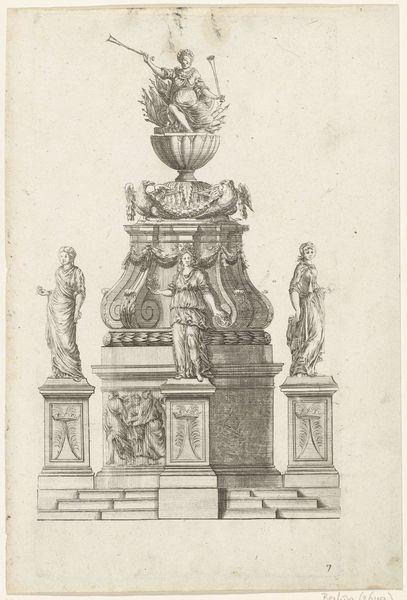
print, engraving
#
neoclacissism
#
allegory
# print
#
classical-realism
#
form
#
line
#
cityscape
#
history-painting
#
engraving
Dimensions: height 127 mm, width 154 mm
Copyright: Rijks Museum: Open Domain
Curator: The crisp lines and balanced composition of this print, dating back to 1787, immediately evoke a sense of classical order and refined restraint. Editor: It strikes me as strangely…empty. Stately, yes, but also rather cold. Is this the entrance to a necropolis? Curator: It is actually "Allegorie ter ere van Hendrik Danielsz. Hooft," a print currently held at the Rijksmuseum. It’s neoclassical in style and the work commemorates a specific historical figure. We must account for the symbolic context embedded within it. Editor: Hooft then... judging from the cherubs heralding his portrait, quite an important figure? I presume these grandiose arches weren't everyday sights for 18th-century Amsterdamers? Curator: Not exactly. Allegory was the dominant visual mode. Notice the flanking columns topped with statues—an idealized vision rooted in classical antiquity, meant to elevate the status of both the city and the subject, Hooft. The precise engraving contributes to the clarity. Editor: The plumes of smoke and the general triumphal vibe suggest something about civic duty, maybe public works. This image isn't just about a man, it’s about power. I’m wondering who commissioned it and how it functioned publicly. Curator: That's right! These elements reinforce Hooft's public persona and legacy. Consider the meticulousness of each engraved line, forming the entire allegorical setting that works to reinforce this image of Hooft's leadership within Amsterdam's broader narrative. Editor: So, in a way, this engraving acted as propaganda, not just memorializing an individual, but legitimizing certain societal structures? How would ordinary citizens interpret such formal pronouncements? Curator: Indeed. The formality speaks volumes about the intentions behind the piece—an attempt to project authority and stability during a period of significant socio-political shifts. A moment captured in lines and balanced composition. Editor: Leaving us with an exercise in both historical and artistic deconstruction, it’s now time for visitors to engage with and interpret it in our current context. Curator: Indeed, it provides us a chance to reflect on how individuals and ideals have historically been commemorated.
Comments
No comments
Be the first to comment and join the conversation on the ultimate creative platform.
